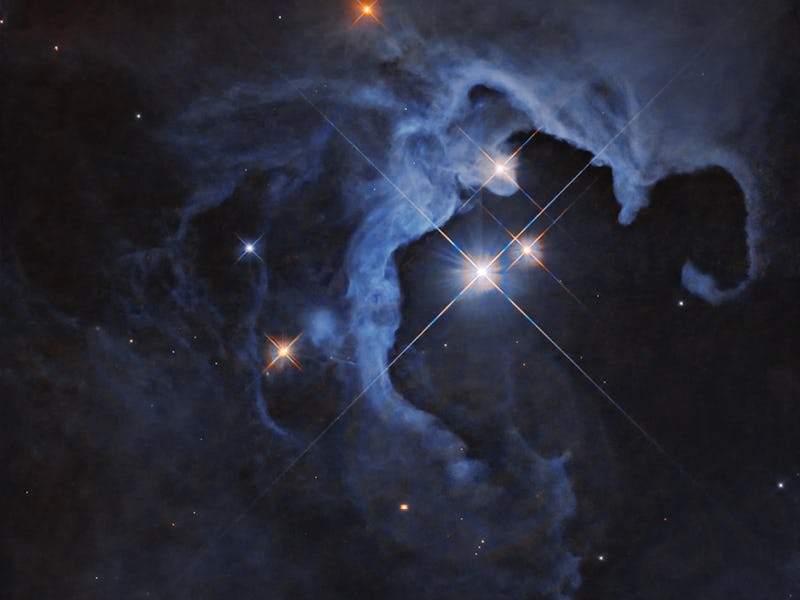A New NASA Image Captures A Trio Of Stars In A Cosmic Nursery
Three baby stars light up the cosmic dust that likely gave birth to them — 550 light-years away.

This week, NASA published an enchanting image of a trio of stars emerging from the clouds of dust and gas from which they formed. This young trio shows what amounts to a cosmic nursery — young stars emerging from the gaseous clouds that likely created them.
NASA found that HP Tau, the star in the cloud, at the top of the central trio, changes in brightness. That could be because it’s still consuming material from the clouds, or emitting flares off its surface, or reveling in the general chaos that comes with stellar adolescence. Thanks to the trio’s light, the Hubble Space Telescope was able to capture this scene, located 550 light-years away in the constellation Taurus.
The triple-star system of young stars HP Tau, HP Tau G2, and HP Tau G3.
HP Tau could become a Sun-like star someday, but it still has ways to go. For one, it needs to reach nuclear fusion, the hallmark of any main sequence star. In a star’s heart, immense pressures and high temperatures fuse hydrogen into helium. But HP Tau, which is probably less than 10 million years old, needs more time. By comparison, the Sun is about 4.6 billion years old.
When HP Tau and its stellar brethren came into view, Hubble was investigating protoplanetary disks. These pancake-shaped regions surround stars. They’re another major part of stellar adolescence, and astronomers curious about our own origins love to study them. From protoplanetary disks, over the course of millions of years, planets, moons and extra bits like comets and asteroids take shape.
Hubble captured this scene using its Wide Field Camera 3. Space Shuttle astronauts installed this critical piece of hardware onto the orbiting telescope fifteen years ago, in May 2009. This mission, called Servicing Mission 4, almost didn’t happen. “After the loss of the space shuttle Columbia in 2003, Servicing Mission 4 was canceled due to safety concerns,” according to NASA. “Public support for the mission surged, and two years later it was reinstated,” the agency added.